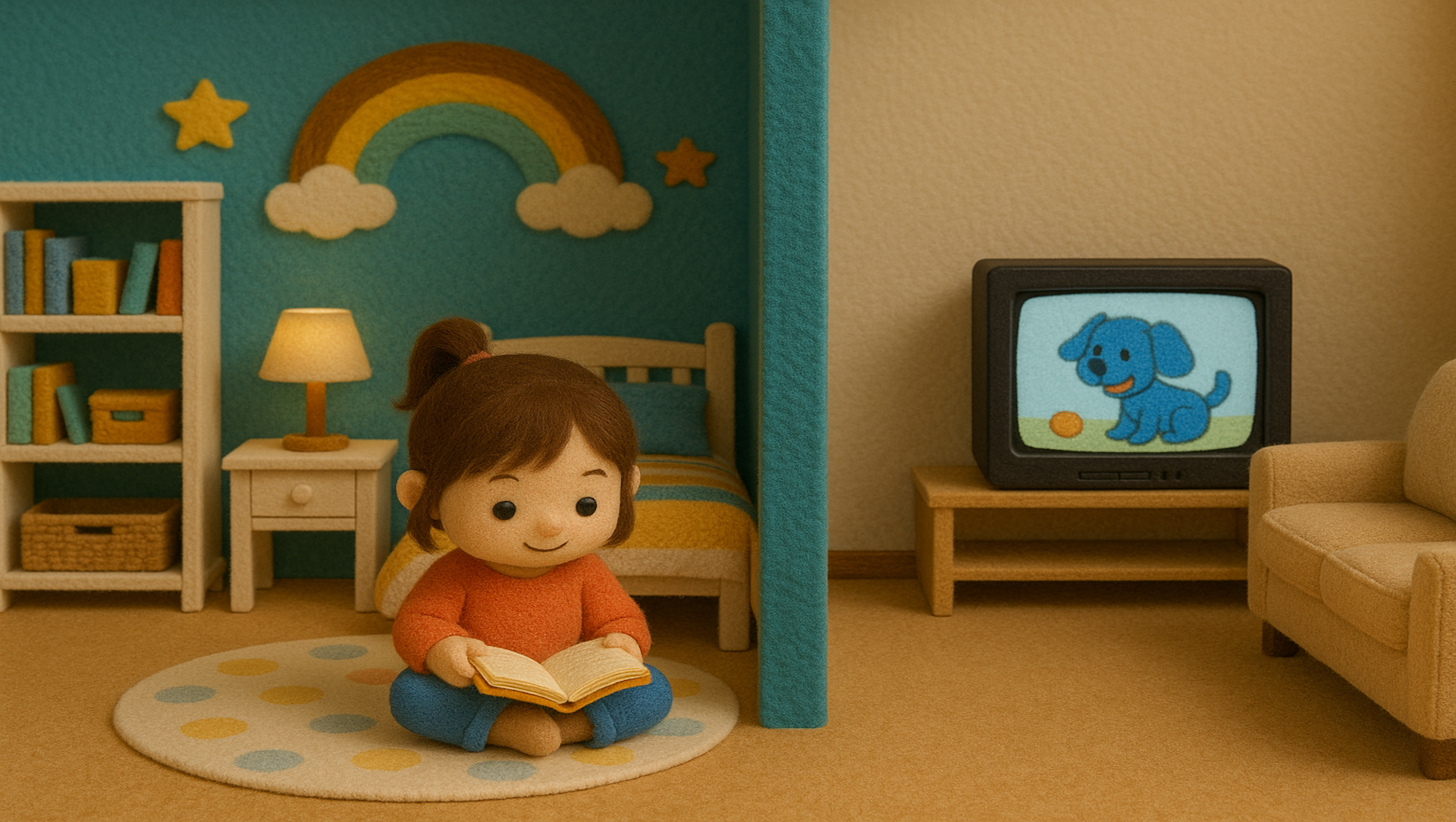Streaming platforms are overflowing with content for kids — bright colors, fun characters, and endless episodes just a click away. And while television can certainly entertain, it rarely provides the deep cognitive and emotional experiences that reading offers — especially during the formative years of childhood.
Here are five ways reading supports children’s growth and offers unique benefits alongside television.
1. Active Participation in the Story
TV is passive. Kids sit back and watch. But when reading, they imagine, infer, and even narrate alongside the story. It’s an active mental workout, not just a visual show. That’s a big reason why reading builds stronger comprehension, empathy, and focus¹.
2. Language Growth at Their Own Pace
TV dialogue moves fast and rarely pauses for understanding. Reading, however, lets children explore new words and sentence structures at their own speed. This pace allows their vocabulary and fluency to grow more naturally² — especially critical in early elementary years.
3. A Story That Reflects Them
TV characters aren’t always relatable. Reading allows children to find — or imagine — characters who share their interests, struggles, or identity. Personal connection matters. It helps children see themselves as part of the world of stories, not just observers of it³.
4. Freedom to Wonder and Ask “What If?”
Most TV shows offer clear plots and fast resolutions. Reading opens the door to deeper curiosity. What happens next? Why did the character do that? These kinds of questions promote higher-order thinking and spark creativity — essential skills in every part of life⁴.
5. A Bonding Experience, Not Background Noise
TV is often background entertainment. Reading, especially with a parent or teacher, is connection. It’s snuggling on the couch, asking questions together, and building trust through shared attention. This kind of presence has long-term emotional and developmental benefits⁵.
Why This Matters We're not saying “turn off the TV” forever. We’re saying that children deserve more ways to engage with storytelling — and reading gives it to them.
📚 References
- Mol, S. E., & Bus, A. G. (2011). To read or not to read: A meta-analysis of print exposure from infancy to early adulthood. Psychological Bulletin, 137(2), 267–296.
- Neuman, S. B., & Celano, D. (2006). The knowledge gap: Implications of leveling the playing field for low-income and middle-income children. Reading Research Quarterly, 41(2), 176–201.
- McNaughton, S. (1995). Shared reading talk: A critical influence on early literacy learning. Reading Research Quarterly, 30(1), 17–25.
- Willingham, D. T. (2006). How knowledge helps: It speeds and strengthens reading comprehension, learning—and thinking. American Educator, 30(1), 30.
- Bus, A. G., van IJzendoorn, M. H., & Pellegrini, A. D. (1995). Joint book reading makes for success in learning to read: A meta-analysis on intergenerational transmission of literacy. Review of Educational Research, 65(1), 1–21.

 All Posts
All Posts
